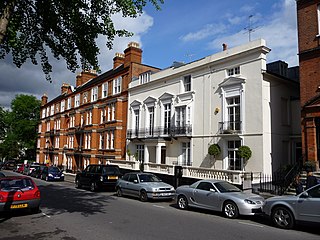
Hampstead is an area in London, which lies 4 miles (6.4 km) northwest of Charing Cross, and extends from the A5 road to Hampstead Heath, a large, hilly expanse of parkland. The area forms the northwest part of the London Borough of Camden, a borough in Inner London which for the purposes of the London Plan is designated as part of Central London.

Highgate is a suburban area of north London at the northeastern corner of Hampstead Heath, 4.5 miles (7.2 km) north-northwest of Charing Cross.

Hampstead Heath is a large, ancient London heath, covering 320 hectares. This grassy public space sits astride a sandy ridge, one of the highest points in London, running from Hampstead to Highgate, which rests on a band of London Clay. The heath is rambling and hilly, embracing ponds, recent and ancient woodlands, a lido, playgrounds, and a training track, and it adjoins the former stately home of Kenwood House and its estate. The south-east part of the heath is Parliament Hill, from which the view over London is protected by law.

George Steevens was an English Shakespearean commentator.
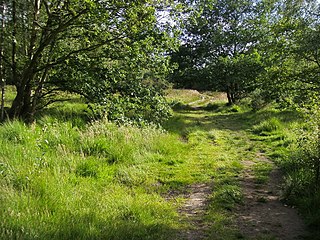
Wimbledon Common is a large open space in Wimbledon, southwest London. There are three named areas: Wimbledon Common, Putney Heath, and Putney Lower Common, which together are managed under the name Wimbledon and Putney Commons totalling 460 hectares. Putney Lower Common is set apart from the rest of the Common by a minimum of 1 mile of the built-up western end of Putney.
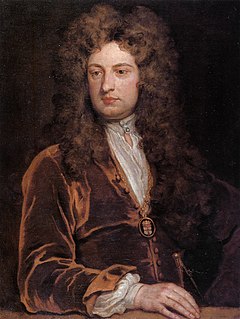
The Kit-Cat Club was an early 18th-century English club in London with strong political and literary associations. Members of the club were committed Whigs. They met at the Trumpet tavern in London and at Water Oakley in the Berkshire countryside.

Hampstead Heath Ponds are a series of some thirty bodies of water on or adjacent to Hampstead Heath, a vast open area of woodland and grassland in north London.

The Spaniards Inn is a historic pub on Spaniards Road between Hampstead and Highgate in London, England. It lies on the edge of Hampstead Heath near Kenwood House. It is a Grade II listed building, dating back to the 16th century.

Dr Steevens' Hospital, one of Ireland's most distinguished eighteenth-century medical establishments, was located at Kilmainham in Dublin Ireland. It was founded under the terms of the will of Dr Richard Steevens, an eminent physician in Dublin. The seal of the hospital consisted of 'The Good Samaritan healing the wounds of the fallen traveller' with the motto beneath "Do Thou Likewise".

The Camberwell Collegiate School was an independent school in Camberwell, London, England. It was located on the eastern side of Camberwell Grove, directly opposite the Grove Chapel.
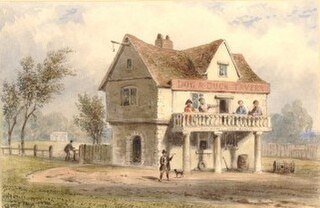
The Dog and Duck was a tavern built upon St George's Fields in London in the 17th century. It was named after the sport of duck-baiting, that took place in adjacent wetland. In the 18th century its gardens were used as a spa but, by the 1770s, with spas no longer fashionable, it declined into a rowdy location for concerts. The magistrates refused to renew its licence, despite protracted legal disputes, and it closed in 1799. The building was then used as a School for the Indigent Blind and demolished in 1812, when the new Bethlem Hospital was built upon the site. That building is now used by the Imperial War Museum.

Heath House is a historic mansion on Hampstead Heath. It is Grade II* listed and located on Hampstead's North End Way in the London Borough of Camden.
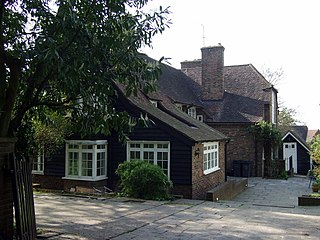
Wyldes Farm is a Grade II* listed former farmhouse in the hamlet of North End, Hampstead, in the London Borough of Barnet, NW11.

The Flask is a Grade II listed public house at 74–76 Highgate West Hill, Highgate, London. According to the 1936 Survey of London, a pub known as The Flask has stood on this spot since "at least as early as 1663". The present buildings probably date from the early 18th century, and were partially rebuilt in about 1767 by William Carpenter. A Manorial court met there in the eighteenth century. The Flask is currently owned and operated by the London-based Fuller's.
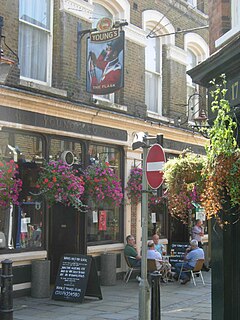
The Flask is a Grade II listed public house at 14 Flask Walk, Hampstead, London, on the site from where the trade in Hampstead mineral water was run, and which is mentioned in the eighteenth century novel Clarissa. It has been owned by Young's Brewery since 1904.
John Gurney Hoare was an English cricketer with amateur status, and later a banker.

Holland House, originally known as Cope Castle, was an early Jacobean country house in Kensington, London, situated in a country estate that is now Holland Park. It was built in 1605 by the diplomat Sir Walter Cope. The building later passed by marriage to Henry Rich, 1st Baron Kensington, 1st Earl of Holland, and by descent through the Rich family, then became the property of the Fox family, during which time it became a noted gathering-place for Whigs in the 19th century. The house was largely destroyed by German firebombing during the Blitz in 1940 and today only the east wing and some ruins of the ground floor and south facade remain, along with various outbuildings and formal gardens. In 1949 the ruin was designated a grade I listed building and it is now owned by the Royal Borough of Kensington and Chelsea.

Francis "Frank" John Potter (1871-1948) was a British architect who designed the new Hampstead Observatory and the Carlton Tavern in Kilburn, London.

The Greene Man is a public house in London's Euston Road. It was formerly known as the Green Man and before that, the Farthing Pie House or Pye House as mutton pies could be bought there for a farthing. When it was established in the 18th century, the area was rural and so the surroundings were farm fields and pleasure gardens. The place was then frequented by notable artists and writers including William Blake and Richard Wilson.

Leicester House was a large aristocratic townhouse in Westminster, London, to the north of where Leicester Square now is. Built by the Earl of Leicester and completed in 1635, it was later occupied by Elizabeth Stuart, a former Queen of Bohemia, and by the Hanoverian Princess of Wales.




















